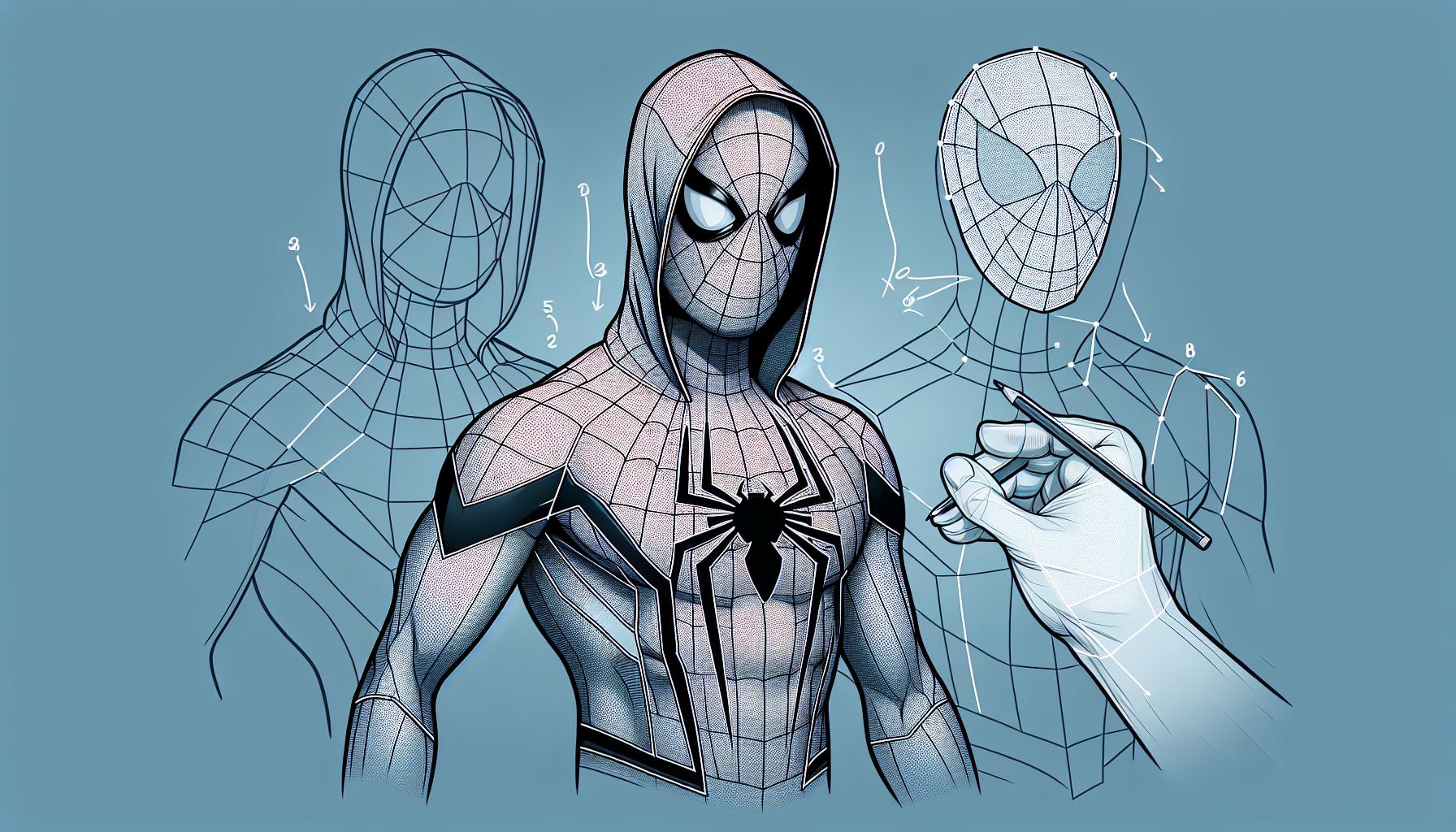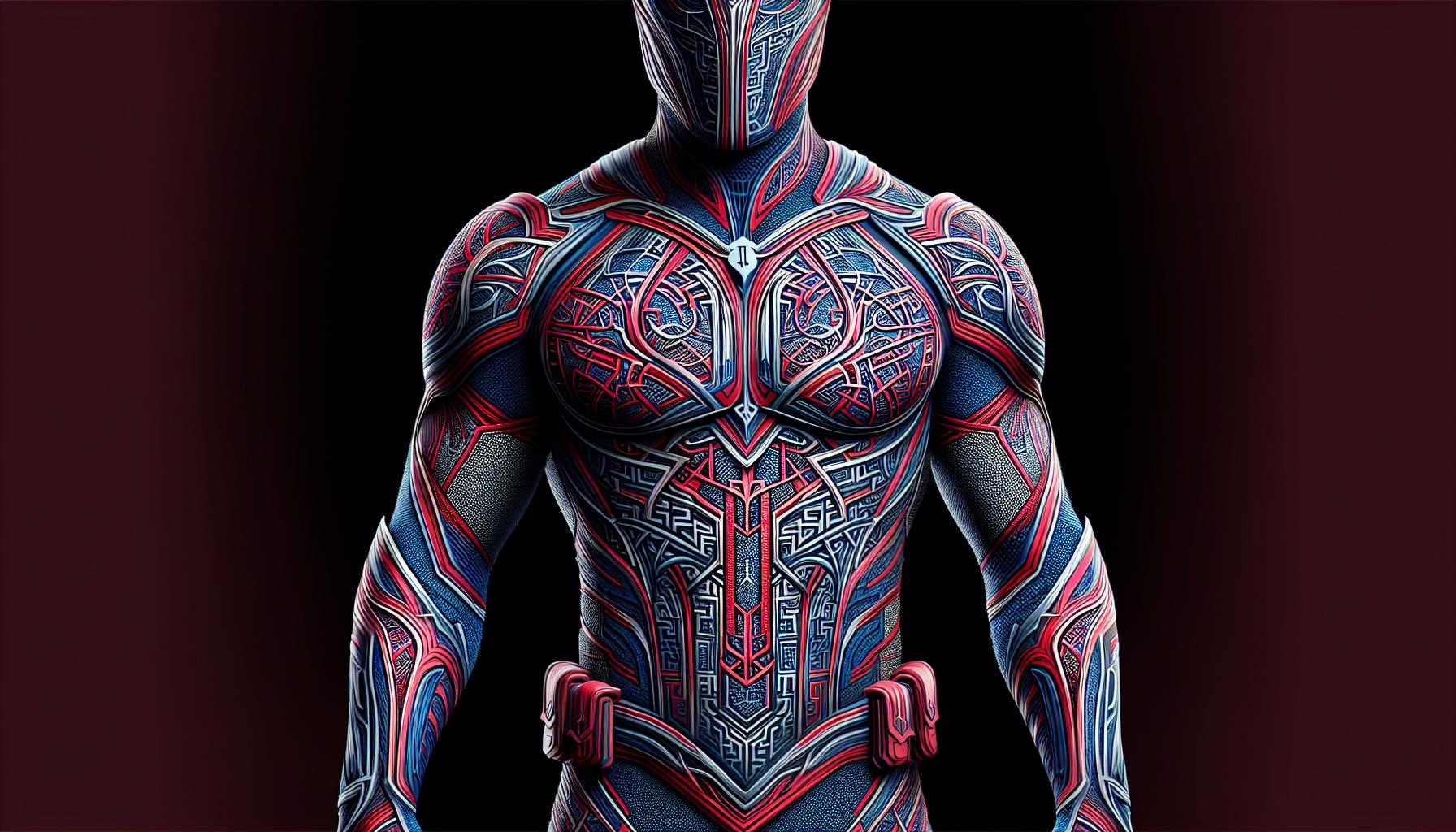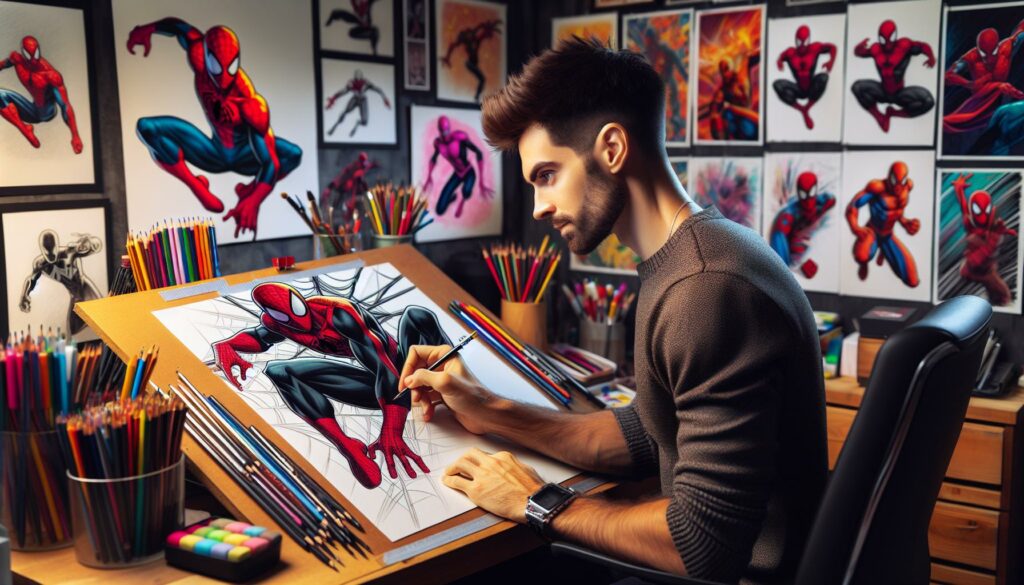Spider-Man swings into the hearts of artists worldwide as one of the most beloved characters to draw. Whether you’re a beginner or an experienced illustrator, creating your own Spider-Man artwork can be an exciting adventure that unleashes creativity and brings the friendly neighborhood hero to life.
Learning to draw Spider-Man doesn’t require radioactive spider bites or superhuman abilities. With simple techniques and a step-by-step approach, anyone can master the art of sketching this iconic web-slinger. From his distinctive mask to his dynamic poses, each element of Spider-Man’s design offers budding artists the perfect opportunity to develop their skills while having fun.
Facil:zydciy5wqce= Dibujos De Spiderman
Basic Shapes and Proportions
Spider-Man’s figure starts with simple geometric shapes. Drawing circles creates the foundation for his head chest. Adding rectangular forms establishes his torso legs. Triangular shapes define his athletic muscular structure.
Costume Details
The iconic Spider-Man suit features a web pattern radiating from the center of his chest. Drawing straight lines creates the basic web design. Adding curves enhances the pattern’s flow across the costume. Small oval shapes establish placement for his signature white eye lenses.
Webbing Pattern Technique
- Draw thin parallel lines 1/4 inch apart
- Create intersecting lines at 45-degree angles
- Add small dots at line intersections
- Connect dots with curved lines for dimension
Dynamic Poses
Spider-Man’s characteristic poses showcase his agility:
- Crouching position with bent knees arms
- Mid-swing pose with extended arm leg
- Wall-crawling stance with spread fingers toes
- Landing pose with one knee down arms back
Essential Details
Key elements that complete the Spider-Man look:
- Black web shooters on both wrists
- Spider logo centered on chest back
- Mask seams along sides jaw
- Muscle definition through costume fabric
- Apply light shading on raised areas
- Darken creases around joints muscles
- Create shadows under web patterns
- Add highlights on eye lenses chest logo
The combination of these elements creates a recognizable Spider-Man illustration. Each component builds upon basic shapes to form the complete character. Practice focusing on individual sections before combining them into full figure drawings.
Essential Drawing Supplies and Tools
Creating Spider-Man artwork requires specific art materials and an organized workspace to achieve professional results. Here’s a comprehensive guide to the essential supplies and workspace setup.
Basic Art Materials Needed
- Drawing paper (90-140 lb weight) for sketching and final artwork
- HB graphite pencils for initial sketches
- 2B-6B pencils for shading and details
- Black fineliner pens (0.1mm to 0.5mm) for web patterns
- Kneaded eraser for precise corrections
- White vinyl eraser for complete removal
- Ruler for straight web lines
- Red and blue markers or colored pencils for costume details
- Blending stumps for smooth shading
- Drawing board or clipboard for stability
- Position desk near natural light or use adjustable desk lamp
- Clear 24×36 inch minimum workspace area
- Place materials within arm’s reach in organizers
- Secure paper with clips to prevent shifting
- Keep reference images at eye level
- Store wet supplies separately from dry materials
- Place cleaning supplies nearby for quick access
- Use document holder for reference materials
- Install task lighting to eliminate shadows
- Maintain ventilation for marker use
Starting With Basic Spider-Man Shapes

Spider-Man’s design breaks down into fundamental geometric shapes that form the foundation of any successful drawing. These basic shapes serve as guidelines for creating accurate proportions and maintaining consistency throughout the illustration.
Drawing the Head and Mask
The head structure starts with a simple oval shape positioned slightly forward to capture Spider-Man’s distinctive profile. Draw horizontal guidelines across the oval to mark the eye level at one-third from the top. Place two angular eye shapes that narrow toward the outer edges, creating the signature mask lenses. Add curved lines from the top of the head to the jaw to establish the mask’s contours. Map out small triangle shapes on the sides to indicate where the mask wraps around the head’s curves.
Creating the Body Outline
The body framework begins with a stick figure featuring circles at major joint points: shoulders, elbows, hips, knees. Connect these points using cylindrical shapes to represent the limbs, maintaining proper proportions with the torso about 2.5 heads tall. Draw an inverted triangle for the upper body, connecting to a narrower waist. Add oval shapes for the shoulders extending into tubes for the arms. The legs follow a similar pattern with elongated cylinders tapering at the joints. Position reference lines across the chest to ensure symmetry in the spider logo placement.
Adding Spider-Man’s Iconic Costume Details

Spider-Man’s costume features distinctive elements that make him instantly recognizable. The web pattern and spider emblem require precise attention to detail for an authentic appearance.
Drawing the Web Pattern
The web pattern consists of intersecting black lines forming a grid across the red sections of the costume. Starting from the center of the mask, draw thin curved lines radiating outward toward the edges. Create horizontal connecting lines between these radiating lines, spacing them 1/4 inch apart to form the signature web segments. The pattern follows the contours of Spider-Man’s body, curving around muscles and joints. A 0.3mm fineliner pen creates clean, precise lines for the web design, while maintaining consistent line weight throughout the pattern.
Perfecting the Spider Logo
The spider emblem appears on both the chest and back of the costume. The chest logo features a compact spider design with legs extending 2-3 inches outward from the center. Draw the body using three connected oval shapes: head, thorax and abdomen. Add eight legs in symmetrical pairs, positioning them at 45-degree angles from the body. The back spider emblem uses a larger design with elongated legs stretching across the shoulders and lower back. Create smooth, tapered points at each leg tip for a sleek appearance.
Mastering Spider-Man’s Dynamic Poses
Spider-Man’s distinctive movements define his character, combining acrobatic flexibility with superhuman strength. Creating dynamic poses captures the essence of his web-slinging adventures through New York City.
Action Poses and Web-Swinging
Drawing Spider-Man in motion starts with a gesture line indicating the flow of movement. Body positioning varies between classic poses: web-swinging at 45-degree angles, wall-crawling with limbs spread wide, crouching ready to spring into action. Key action moments include:
- Extend the arms forward during web-shooting sequences
- Arch the back in mid-swing poses to show momentum
- Bend knees at 90-degree angles for launching positions
- Position hands strategically to show web-line grip
- Tilt the head toward the direction of movement
- Create foreshortening effects for dramatic perspectives
Muscle tension appears through:
- Defined forearm muscles while shooting webs
- Flexed thigh muscles during kicks
- Tightened core muscles in aerial poses
- Contracted shoulder muscles during climbing
- Joint bends
- Shoulder rotations
- Hip twists
- Knee compressions
Shading and Final Touches
Spider-Man’s distinctive appearance emerges through strategic shading techniques that create depth and dimension. A combination of cross-hatching and stippling adds texture to the fabric sections of the costume. Light sources determine shadow placement, with darker shading applied beneath the chest muscles and along the inner legs.
The web pattern casts subtle shadows on the underlying suit, requiring delicate parallel lines to indicate depth. Gradual transitions from light to dark enhance the suit’s spandex-like quality using 2B to 6B pencils. Cross-hatching techniques create deeper shadows in areas like:
- Muscle definition creases
- Under the mask edges
- Web shooter mechanisms
- Folds near joint articulation
Highlights reflect light on raised surfaces including:
- Spider emblem edges
- Eye lens contours
- Prominent muscle peaks
- Web pattern intersections
A kneaded eraser lifts graphite to create white highlights on the costume’s reflective surfaces. Blending stumps smooth transitions between light and dark areas while maintaining crisp edges on the web pattern. The final layer uses a 0.1mm fineliner to strengthen key outlines and emphasize the web design’s precision.
Texture variations distinguish different parts of the costume:
- Smooth matte finish on the red sections
- Slight grain on the blue areas
- Metallic sheen on web shooters
- Glossy reflection on eye lenses
The completed illustration displays proper form through strategic light placement and careful attention to material textures. Each shading technique contributes to Spider-Man’s three-dimensional appearance while maintaining the comic book aesthetic.
Drawing Spider-Man offers a rewarding creative journey for artists at every skill level. Through basic shapes systematic construction and attention to iconic details like the web pattern and dynamic poses anyone can bring this beloved superhero to life on paper.
Armed with the right tools proper techniques and patient practice artists will find themselves mastering Spider-Man’s distinctive features. The key lies in breaking down complex elements into manageable steps while maintaining focus on proportion movement and costume details.
Remember that every artist’s journey starts with a single sketch. Whether drawing Spider-Man for fun or pursuing professional comic art the skills developed through these exercises will enhance overall artistic abilities.

